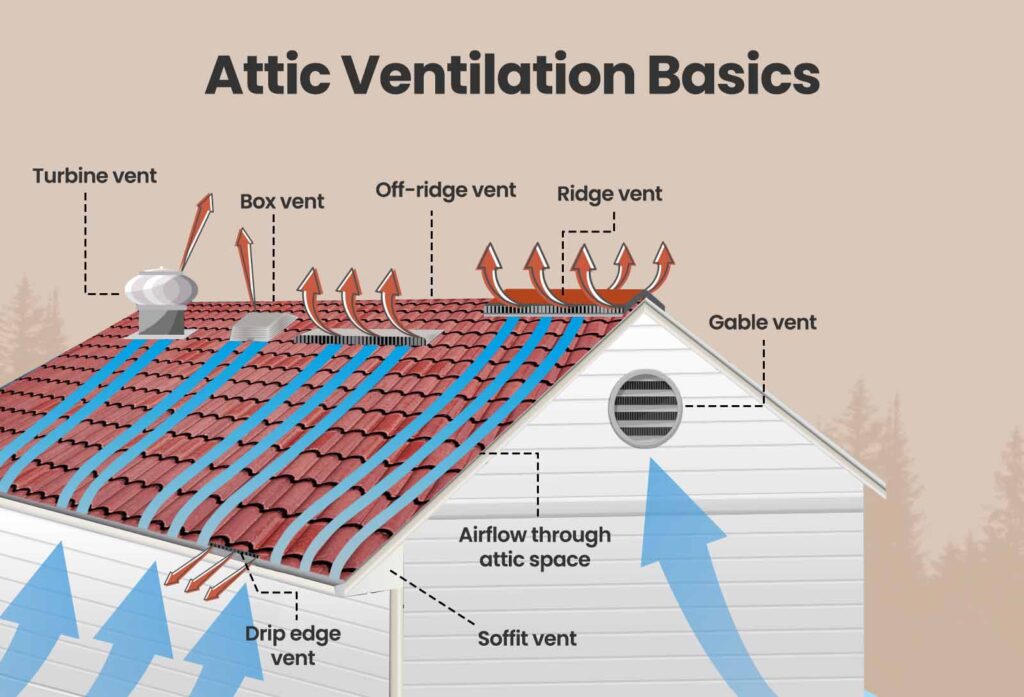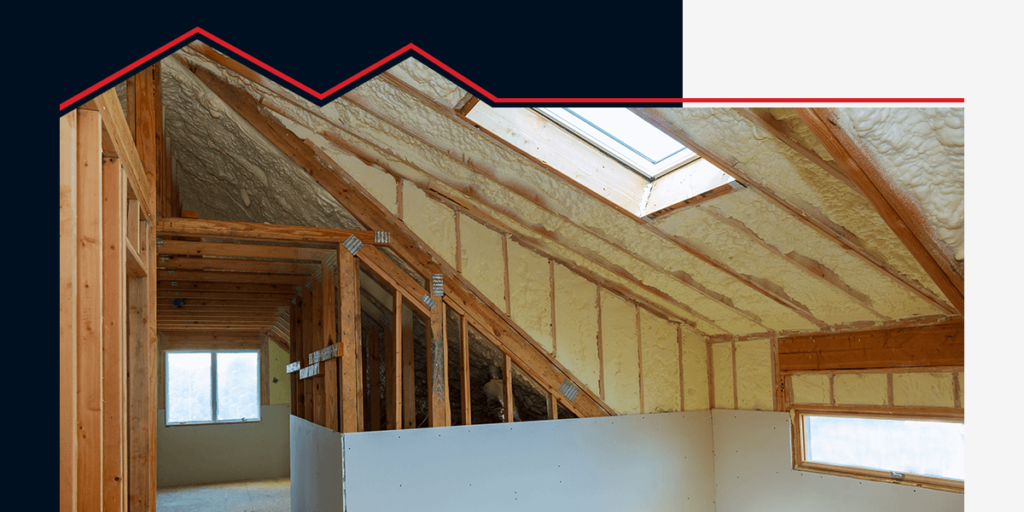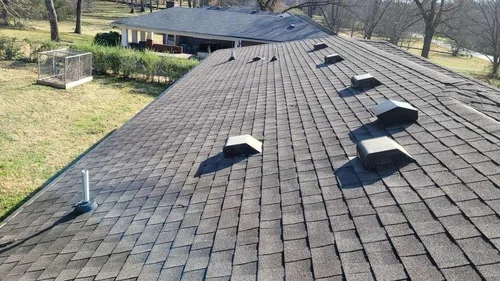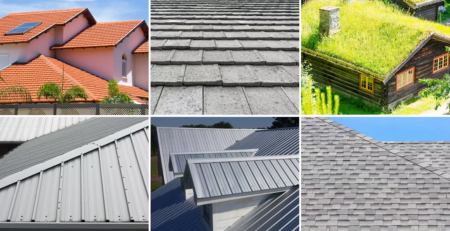Is Your Attic Ventilation Working?
Your attic might be out of sight, but it’s not out of mind when it comes to your home’s health. Proper attic ventilation keeps your house comfortable, energy-efficient, and free from costly damage. But how do you know if your attic ventilation is doing its job? Poor ventilation can lead to a host of problems, from skyrocketing energy bills to mould growth that threatens your family’s health. In this guide, we’ll walk you through the signs of inadequate ventilation, how to check your system, and simple steps to fix it. Let’s ensure your attic is working as hard as the rest of your home.
What Is Attic Ventilation and Why Does It Matter?

Attic ventilation refers to the system that allows fresh air to flow into and out of your attic, regulating temperature and moisture. It typically involves a combination of intake vents (like soffit vents under the eaves) and exhaust vents (like ridge vents or gable vents on the roof). This airflow prevents heat buildup in summer, reduces moisture in winter, and protects your roof and insulation year-round.
Without proper ventilation, your attic can become a breeding ground for problems. Excess heat can damage shingles, increase cooling costs, and make your home uncomfortable. Trapped moisture can lead to mould, Mildew, and wood rot, which can weaken your home’s structure. According to the U.S. Department of Energy, effective attic ventilation can reduce cooling costs by up to 15%, making it a critical part of home maintenance.
Signs Your Attic Ventilation Isn’t Working
Is your attic ventilation up to par? Here are key indicators that something’s off:
- Hot Upper Floors: If the bedrooms on your top floor feel like a sauna in summer, your attic may not be venting heat effectively. Poor ventilation traps hot air, forcing your HVAC system to work harder.
- High Energy Bills: Spikes in your cooling or heating costs could point to ventilation issues. When hot air lingers in the attic, your air conditioner struggles to keep up, driving up energy expenses.
- Mould or Mildew Smells: A musty odour in your attic or upper rooms suggests moisture buildup, a common result of poor ventilation. Mould can harm air quality and lead to health issues.
- Ice Dams in Winter: If you notice icicles forming along your roof’s edges in winter, inadequate ventilation may be causing warm attic air to melt snow, which refreezes as ice dams, damaging your roof.
- Visible Roof Damage: Check your shingles. If they’re curling, cracking, or ageing prematurely, excessive heat from poor ventilation could be the culprit.
- Condensation or Frost: Inspect your attic for water droplets or frost on the underside of the roof. These are telltale signs of trapped moisture due to insufficient airflow.
If you spot any of these issues, it’s time to take a closer look at your ventilation system.
How to Check If Your Attic Ventilation Is Working
You don’t need to be a home improvement expert to evaluate your attic ventilation. Here’s a step-by-step guide to assess it yourself:
1. Inspect Your Vents:
- Soffit Vents: Crawl into your attic or look under the eaves from outside. Are the soffit vents clear of insulation, debris, or paint? Blocked vents restrict airflow.
- Exhaust Vents: Check ridge vents, gable vents, or attic fans. Ensure they’re free of obstructions like bird nests or leaves.
2. Feel for Airflow:
- On a windy day, hold a tissue or lightweight cloth near your soffit vents. If it moves, air is flowing in. Similarly, check exhaust vents for outgoing airflow.
3. Measure Attic Temperature:
- Use a thermometer to compare your attic’s temperature to the outdoor temperature. In summer, the attic should be within 10–20°F of the outside air. A hotter attic signals poor ventilation.
4. Look for Moisture:
- Check for signs of water damage, such as stained wood, rusted nails, or mould. These indicate that moisture isn’t escaping properly.
5. Test Your Attic Fan (if applicable):
- If you have a powered attic fan, turn it on and listen for the motor. A quiet or non-working fan may need repair or replacement.
For a precise assessment, consider hiring a professional to measure airflow or using a hygrometer to check humidity levels. A well-ventilated attic typically maintains humidity below 50%.
Common Causes of Poor Attic Ventilation
Understanding why your ventilation isn’t working can help you fix it. Common culprits include:
- Blocked Vents: Insulation, debris, or improper installation can clog intake or exhaust vents, stifling airflow.
- Inadequate Vent Size: Older homes may have undersized vents that can’t handle modern insulation or roofing materials.
- Lack of Balance: Ventilation requires equal intake and exhaust. Too few soffit vents or an overreliance on exhaust vents disrupts airflow.
- Broken Attic Fans: If your system relies on a powered fan, a malfunction can halt ventilation entirely.
- Poor Design: Some homes lack proper vent placement, such as missing ridge vents or insufficient soffit coverage.
Each issue has a solution, but identifying the root cause is the first step.
How to Improve Your Attic Ventilation

If your ventilation isn’t working, don’t worry, there are practical fixes to restore airflow and protect your home:
- Clear Blockages: Remove debris, insulation, or other obstructions from vents. Install vent chutes if insulation is covering the soffit vents.
- Add or Upgrade Vents: Consider installing additional soffit vents or a ridge vent to balance intake and exhaust. A roofing contractor can recommend the right vent-to-square-footage ratio (typically 1:150, per building codes).
- Install an Attic Fan: For homes with persistent heat issues, a solar-powered or electric attic fan can boost airflow. Ensure it’s sized correctly for your attic.
- Improve Insulation: Proper insulation works hand-in-hand with ventilation to regulate temperature. Replace damaged or outdated insulation to enhance efficiency.
- Consult a Professional: For complex issues, a roofing or HVAC expert can assess your system and recommend upgrades, such as turbine vents or powered exhaust systems.
The Benefits of Proper Attic Ventilation
Fixing your attic ventilation offers immediate and long-term advantages:
- Lower Energy Costs: Efficient ventilation reduces strain on your HVAC system, cutting cooling and heating bills.
- Extended Roof Lifespan: By preventing heat and moisture damage, ventilation protects shingles and underlayment, delaying costly roof replacements.
- Improved Indoor Air Quality: Proper airflow reduces mould and Mildew, creating a healthier home environment.
- Year-Round Comfort: A well-ventilated attic keeps your home cooler in summer and prevents ice dams in winter.
When to Call a Professional
While some checks and fixes are DIY-friendly, certain situations call for expert help:
- Persistent mould or structural damage.
- Complex vent installations or roof modifications.
- Electrical work for attic fans.
- Uncertainty about building codes or ventilation ratios.
A professional can ensure your system meets local codes and performs optimally, saving you time and money in the long run.
Final Thoughts
Your attic ventilation plays a quiet but critical role in your home’s health and efficiency. By recognising the signs of poor ventilation, checking your system regularly, and making necessary improvements, you can prevent costly repairs and keep your home comfortable. Start with a simple inspection today, clear those vents, feel for airflow, and monitor temperature and humidity. If problems persist, don’t hesitate to call a professional to get your attic back on track. A well-ventilated attic isn’t just a luxury; it’s a necessity for a healthy, energy-efficient home.












Leave a Reply